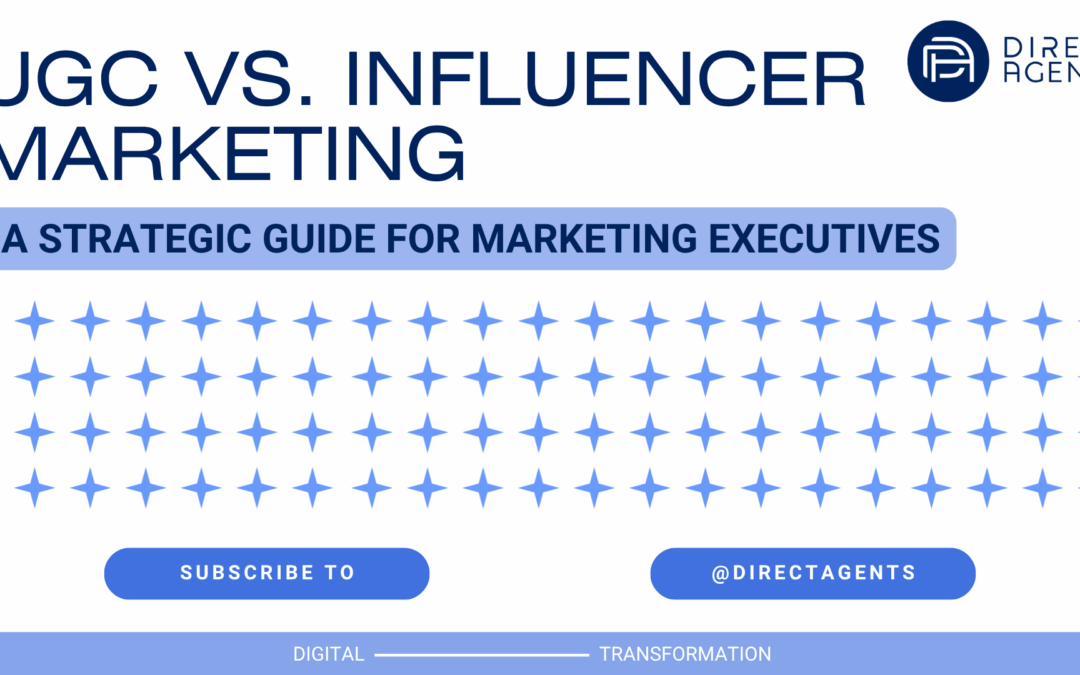In today’s fragmented and competitive media landscape, CMOs and senior marketers face a high-stakes question: How can brands scale content without sacrificing authenticity or performance?
Two leading strategies, User-Generated Content (UGC) and Influencer Marketing,offer answers, but each plays a fundamentally different role. For marketing leaders, understanding these nuances is key to unlocking ROI across the entire customer journey.
Understanding the Strategic Divide
Influencer marketing is about visibility and brand storytelling. It involves partnering with individuals who have built loyal audiences and who bring aspirational value to the table. These creators lend their voice, aesthetic, and authority to the brand, making them especially effective in top-of-funnel initiatives like product launches or brand campaigns.
UGC, on the other hand, thrives on relatability. Whether sourced from real customers or hired creators who emulate genuine testimonials, UGC is designed for authenticity over authority. It is most often deployed in mid- and lower-funnel initiatives—landing pages, retargeting ads, product pages—where performance and trust drive results.
The distinction matters because each tactic maps to different stages of the funnel, uses different KPIs, and requires different operational models. Conflating them leads to misaligned strategy, underperforming content, and wasted budget.
Addressing Key Challenges
Influencer Marketing – Common Pain Points:
- Rising consumer skepticism toward heavily sponsored or inauthentic content
- High creative production costs with often limited rights for repurposing
- Increasing regulatory scrutiny around disclosures and transparency
UGC – Common Operational Hurdles:
- Inconsistent content quality, especially when relying on organic sourcing
- Difficulty maintaining brand alignment across diverse creators
- Complicated licensing and content rights management processes
Despite these challenges, both formats offer significant upside when managed strategically.
Influencer content can generate cultural relevance, virality, and storytelling that resonates deeply. UGC, meanwhile, often outperforms branded content in paid media because it provides social proof and feels more trustworthy to consumers.
When combined, they create a complementary ecosystem: one builds awareness, the other drives action.
When to Use Each Strategy
Leaders should think of influencer marketing as a catalyst for:
- Launching new products or campaigns
- Telling high-impact stories with third-party validation
- Building top-of-funnel reach and excitement
Use UGC when:
- Running conversion-focused or retargeting campaigns
- Testing multiple creative iterations in performance marketing
- Building a scalable library of content for paid, email, and web
At Direct Agents, we often implement a hybrid strategy: influencers create buzz and demand, while UGC reinforces the message and fuels conversions across paid and owned media. We also work with vetted creators to produce UGC-style content at scale, ensuring consistency in quality and performance.
Key Implications for Executive Decision-Making
To lead in this new era of content marketing, CMOs must evolve from short-term campaign thinking to long-term content architecture. That means:
- Rethinking budget allocation: Shift from channel-specific spend to a modular content strategy that maximizes asset value across use cases.
- Prioritizing content rights: Ensure all partnerships include broad licensing for paid media, email, and site usage.
- Investing in creative flexibility: Develop assets that can flex across audiences, formats, and funnel stages.
- Focusing on performance metrics: Look beyond vanity metrics like reach or likes—optimize toward cost-per-click, engagement rate, and conversion lift.
This shift turns content from a marketing expense into a scalable growth asset.
Actionable Next Steps
- Audit your current content portfolio: Identify imbalances—are you overly reliant on polished brand creative or under-leveraging social proof?
- Test across the funnel: Use influencer content to capture attention and UGC to convert.
- Secure rights upfront: Ensure all creator contracts include paid usage terms.
- Source creators strategically: You don’t need macro influencers—look for creators with the right voice, aesthetic, and creative control.
- Measure what matters: Build attribution models that tie content efforts to actual business outcomes.
Final Thoughts
The convergence of UGC and influencer marketing isn’t just a tactical shift—it’s a strategic imperative. In a world where trust is scarce and attention is short, brands that fuse influence and authenticity will win. By treating creators not as vendors, but as an extension of your content strategy, you’ll unlock brand relevance, customer trust, and scalable results.
At Direct Agents, we help our clients build high-performing content ecosystems, not just run campaigns. From influencer partnerships to UGC production and paid media integration, we bring strategy, execution, and impact under one roof.
Our team is ready to be your partner in turning strategy into impact. Please contact us at [email protected] to get started!

